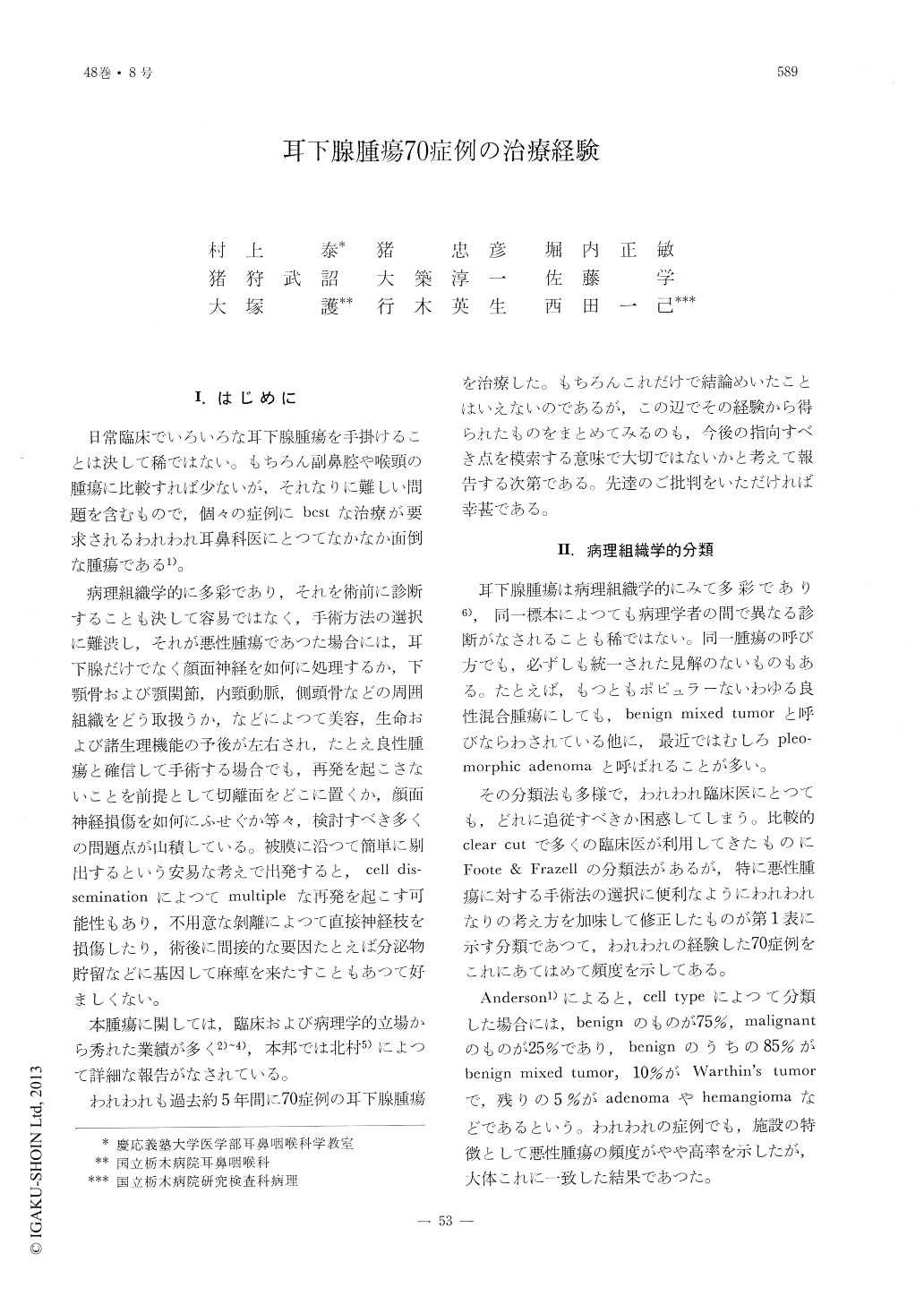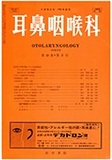Japanese
English
- 有料閲覧
- Abstract 文献概要
- 1ページ目 Look Inside
I.はじめに
日常臨床でいろいろな耳下腺腫瘍を手掛けることは決して稀ではない。もちろん副鼻腔や喉頭の腫瘍に比較すれば少ないが,それなりに難しい問題を含むもので,個々の症例にbestな治療が要求されるわれわれ耳鼻科医にとつてなかなか面倒な腫瘍である1)。
病理組織学的に多彩であり,それを術前に診断することも決して容易ではなく,手術方法の選択に難渋し,それが悪性腫瘍であつた場合には,耳下腺だけでなく顔面神経を如何に処理するか,下顎骨および顎関節,内頸動脈,側頭骨などの周囲組織をどう取扱うか,などによつて美容,生命および諸生理機能の予後が左右され,たとえ良性腫瘍と確信して手術する場合でも,再発を起こさないことを前提として切離面をどこに置くか,顔面神経損傷を如何にふせぐか等々,検討すべき多くの問題点が山積している。被膜に沿つて簡単に剔出するという安易な考えで出発すると,cell disseminationによつてmultipleな再発を起こす可能性もあり,不用意な剥離によつて直接神経枝を損傷したり,術後に間接的な要因たとえば分泌物貯留などに基因して麻痺を来たすこともあつて好ましくない。
Seventy cases of parotid tumors surgically treated during the past five years are reported. They were composed of 35 cases of benign tumors, 24 cases of malignant tumors and 11 cases of tumor-like lesions. There were also 26 cases in whom the lesion was considered as a benign mixed tumor. Among the malignant cases, 19 were considered as various types of primary tumors while 5 were metastatic.
It is obvious that any kind of parotid tumor should be removed thoroughly without cell dissemination and that even in case of benign tumor, it is senseless to make extirpation in contact with its capsule. However, it may be reasonable, on the other hand, to salvage some kind of malignant tumors such as malignant mixed tumor or the acinic cell carcinoma by superficial lobectomy preserving the facial nerve, since these are not invasive to surrounding tissues at least in their early stages.

Copyright © 1976, Igaku-Shoin Ltd. All rights reserved.


